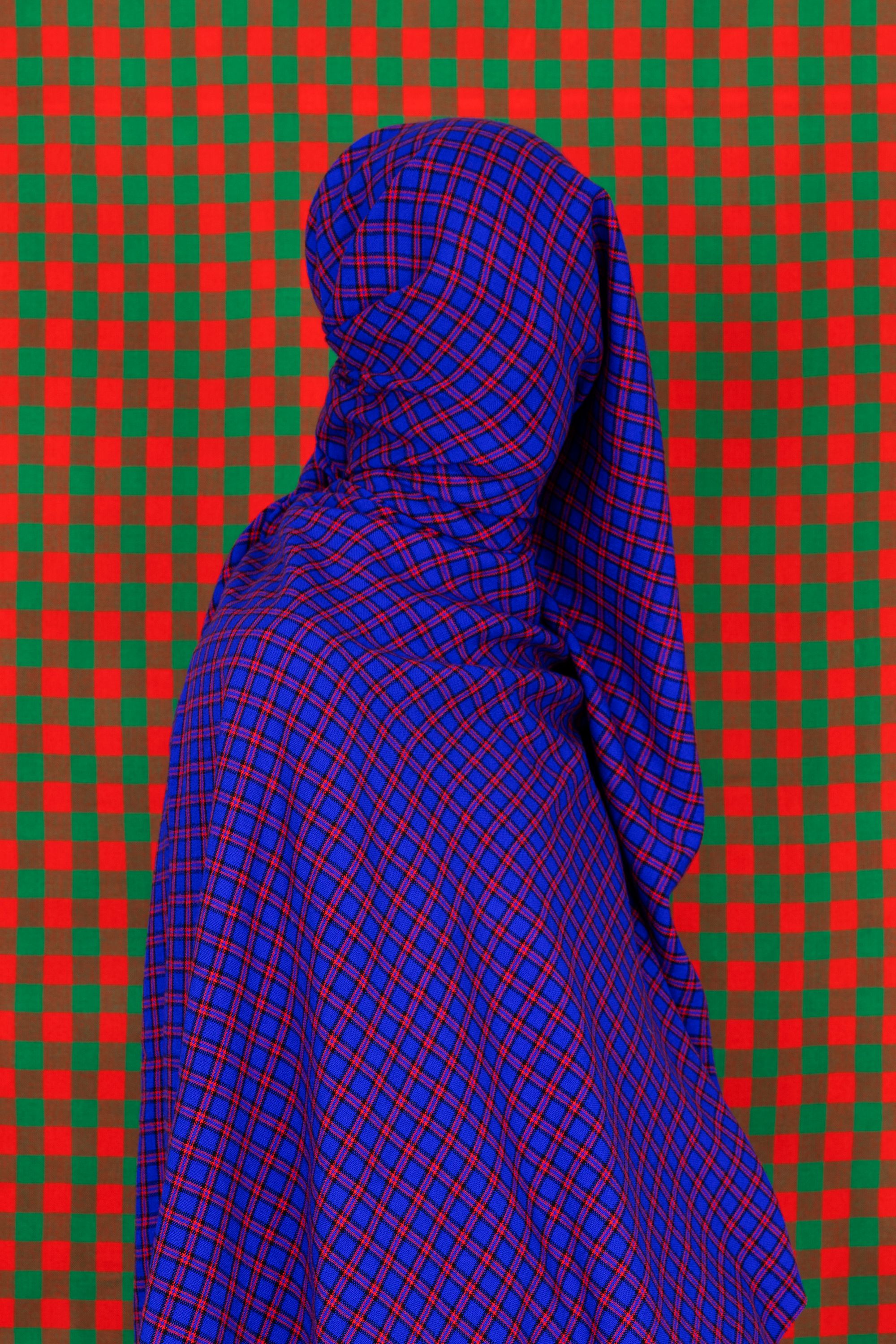MAASAIPhoto Series
20249 artworks
Drum, 2024
The semi-nomadic Maasai community has existed for thousands of years. Sometime in the 17th or 18th century, they migrated south from the lower Nile Valley to settle in Tanzania and Kenya, and their tribal culture remains unchanged to this day. It is interesting to consider that the Maasai originated near the cradle of civilization, where homo sapiens is believed to have first appeared. Perhaps it is this continuity that grounds them, making them less vulnerable to the constant pressures of change.
The Maasai are both warriors and herders, raising cattle and practicing ancestral rites and rituals that they continue to pass along to future generations. One of these traditions is a heightened awareness of the natural world. They notably use color—as perceived in the flora and fauna that surround them—as language. Blue is energy, sky and water, red is blood and the earth, green is nature and its bounty. These associations carry over into the textiles of the Maasai; i.e., if you are a warrior, wearing red into battle will bring you luck.
From a historical perspective, the Maasai dressed in animal hides until sometime in the 19th century, when colonial powers arrived in Africa, and began to exchange manufactured cloth for ivory, spices, and in some cases, humans—though the Maasai are believed to have disapproved of the slave trade.The traditional garment is a shuka, or blanket. At some point in time, tribespeople encountered what is thought to be Scottish tartan, probably brought to Africa by missionaries. This bountiful discovery, evokes the infrathin theory as proposed by Marcel Duchamp, which has been described as “as the rapidly fading trace or aura of something that was”.(1)
Suddenly the Maasai discovered a highly practical textile that they integrated into their traditional way of life, creating a new symbol that has since gained notoriety around the world, inseparable from their tribal identity. Whatever the origin, the red and blue plaid shuka became the norm. What can we call the opposite of appropriation? Most exchanges between the colonized and the colonizer leave the former stripped by the latter, but here the Maasai adopted—and adapted—a very specific object, to the extent that it has become an identifier of their entire culture.
Today, the mills where these fabrics were once made have shuttered, and the cloth is sourced in China, arriving wrapped in plastic bags labeled “Made in China - Masai Wool”. MAASAI MARA (2019-2025) returns us to the question of who owns this cloth; who benefits from the tradition of wearing this cloth? What is the distribution of power?
In 2012, Louis Vuitton unveiled a menswear collection based entirely on Maasai shuka cloth. This event raised concerns about intellectual property and development policy, leading to the creation of the Maasai Intellectual Property Initiative (MIPI), “created to challenge companies referring to or copying the signature Maasai style without a licensing agreement”. (2)
Why does China receive the full benefit of the sale of their iconic symbols when more than three-quarters of the one and a half million members of the Maasai community live below the poverty level? The profits associated with the appropriation of Maasai heritage are estimated to be in excess of ten million dollars in licensing fees on an annual basis. If we consider the arrival of colonial powers in Africa as the first act of violent cultural appropriation, when resources were pillaged for financial gain, then the second act is surely the capitalist extraction of identity, in this case the identity of the Maasai.
The dominant red and blue pattern—blue the color of our blood, red when oxidized—of the shuka represents the very essence of this unique warrior/pastoralist people, who have maintained their way of life for centuries. Does this piece of cloth somehow represent the relegation of one of the oldest and most regal communities to inferior status?
- Kristi Ann Jones
_________________________________
1. Burry, J. (2020, December 31). INFRATHIN – The aura of something that was. The Everyday Artist. https://everydayartist.com/infrathin-the-aura-of-something-that-was/
2. Jones, S. (2017, February 7). Maasai people of East Africa fighting against cultural appropriation by luxury fashion labels | The Independent. The Independent.

